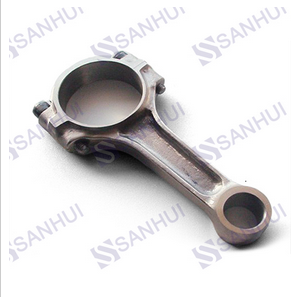Classification

The classification of hard alloy
Submitted by admin on 09/22/2014
Cemented carbide takes the carbides (WC, TiC) with the high hardness and refractory metal and the micron powder as the main components, and takes cobalt (Co) or nickel (Ni), molybdenum (Mo) as the binder, what's more, it's a kind of powder metallurgy products sintered in vacuum furnace or hydrogen reduction furnace.
Ⅰ. The classification and brand
1. The tungsten cobalt hard alloy
The main components are tungsten carbide (WC) and binder cobalt (Co).
The brand is composed of "YG" (Chinese phonetic prefix of hard and cobalt) and the percentage of the average cobalt content.
For example, YG8 means the average content of W-Co is 8%, and the rest is tungsten carbide and the tungsten cobalt hard alloy.
2. The tungsten titanium cobalt hard alloy
The main components are tungsten carbide, titanium carbide (TiC) and cobalt.
Its brand is composed of "YT" (Chinese phonetic prefix of hard and titanium) and the average content of titanium carbide.
For example, YT15 means that the average of W-Ti is 15%, the rest is the tungsten carbide and the tungsten titanium cobalt hard alloy with cobalt content.
3. The tungsten titanium tantalum (NB) hard alloy
The main components are the tungsten carbide, titanium carbide, tantalum carbide (or niobium carbide) and cobalt. This kind of cemented carbide is also called general or universal carbide hard alloy.
Its brand is composed of "YW" (Chinese phonetic prefix of hard and Wan ) with sequence number, such as YW1.
Ⅱ. The main production countries
There are more than 50 countries engaging in the production of hard alloy in the world, the total output can up to 27000 ~ 28000t-, the main production countries are USA, Russia, Sweden, Germany, Japan, China, Britain and France, the hard alloy markets in the world is basically in the saturated condition, and the market competition is very intense. Chinese cemented carbide industry began to form in the late 50's. Chinese cemented carbide industry got a rapid development in 60-70s. The total production capacity can up to 6000t and the hard alloy output reached 5000t at the beginning of the 90's, only next to Russia and America, ranking third in the world.

Ⅰ. The classification and brand
1. The tungsten cobalt hard alloy
The main components are tungsten carbide (WC) and binder cobalt (Co).
The brand is composed of "YG" (Chinese phonetic prefix of hard and cobalt) and the percentage of the average cobalt content.
For example, YG8 means the average content of W-Co is 8%, and the rest is tungsten carbide and the tungsten cobalt hard alloy.
2. The tungsten titanium cobalt hard alloy
The main components are tungsten carbide, titanium carbide (TiC) and cobalt.
Its brand is composed of "YT" (Chinese phonetic prefix of hard and titanium) and the average content of titanium carbide.
For example, YT15 means that the average of W-Ti is 15%, the rest is the tungsten carbide and the tungsten titanium cobalt hard alloy with cobalt content.
3. The tungsten titanium tantalum (NB) hard alloy
The main components are the tungsten carbide, titanium carbide, tantalum carbide (or niobium carbide) and cobalt. This kind of cemented carbide is also called general or universal carbide hard alloy.
Its brand is composed of "YW" (Chinese phonetic prefix of hard and Wan ) with sequence number, such as YW1.
Ⅱ. The main production countries
There are more than 50 countries engaging in the production of hard alloy in the world, the total output can up to 27000 ~ 28000t-, the main production countries are USA, Russia, Sweden, Germany, Japan, China, Britain and France, the hard alloy markets in the world is basically in the saturated condition, and the market competition is very intense. Chinese cemented carbide industry began to form in the late 50's. Chinese cemented carbide industry got a rapid development in 60-70s. The total production capacity can up to 6000t and the hard alloy output reached 5000t at the beginning of the 90's, only next to Russia and America, ranking third in the world.

------分隔线----------------------------




